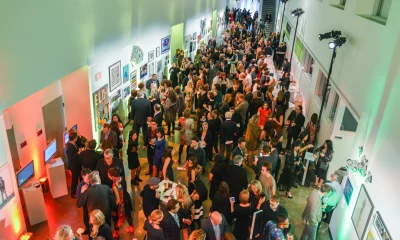Living
Kroell prepares to bare it all for Playgirl
Gay model coming to Baltimore for ‘Hunks in Trunks’ fundraiser

After competing on Bravo’s “Make Me a Supermodel,” contestant Ronnie Kroell made the move from Chicago to New York City where he continues to model and to pursue a career in acting. He also contributes to philanthropic ventures for several causes. Kroell recently agreed to appear nude in the June 2010 issue of Playgirl. Kroell will be in Baltimore on Thursday, May 20 for the all-male swimsuit fashion show, Hunks in Trunks.
The Washington Blade talked with Ronnie about his life in New York City, his philanthropic work, posing for Playgirl and more.
Washington Blade: Since you competed on “Make Me a Supermodel” you have moved to New York City, what has life been like for you after the move?
Ronnie Kroell: You could say it’s a dream come true. Following “Make Me a Supermodel,” which I can’t believe was over two years ago, I went through a scary time because I moved from Chicago to New York to follow “the dream” and not really knowing what I was getting myself into and I didn’t have any safety nets to catch me if I fell.
Coming to New York City was one of the best decisions I think I’ve ever made in my career. I love the city and all it has to offer and I take it one day at a time. I’m working hard at my passion, which is primarily the fashion industry and modeling but also expanding into the acting arena and being a humanitarian. I’m trying to get as involved as possible with the charities I think need the most help and that I feel are the closest to my heart.
Blade: You participated in Fashion Week in New York in February. Can you give a few details of your experience?
Kroell: There is nothing more thrilling than fashion week in New York. I love to be under the tents in Bryant Park, although this was the last year to be held in Bryant Park. The entire event is being moved to Lincoln Center for September’s Fashion Week. I especially love seeing designers like Malan Breton, Christian Siriano and other designers that are really making names for themselves. I feel really close with Malan because he and I shared in the same experience because we were part of the Bravo TV family. As passionate as he is as a designer and having that incredible opportunity to be on Bravo’s “Project Runway,” there are a lot of challenges to overcome from being on a reality show like that to then become a legitimate designer and be taken seriously.
I was also able to participate in Naomi Campbell’s Relief for Haiti event, which was so much fun. You really won’t find a community that is more dedicated and more passionate about getting involved when such major disasters happen or when there is a need to help other humans American or otherwise. The fashion community is really tight knit and comes together in such a huge way and raises awareness and the money it takes to help.
Blade: Which charities have you been focused on lately?
Kroell: Right now I’m working with a charity out of Africa called Womankind. What they do is try and protect women’s rights and are trying to prevent female genital mutilation in Africa. My business partner is a member of the board of this not-for-profit and we are hosting a charity event here in New York City on June 7 at La Palm to benefit Womankind. I’ve also been really involved with GLAAD, HRC, and the ACLU in various ways.
Blade: Speaking of GLAAD, you recently attended the GLAAD Media Awards. Describe your experience at the event.
Kroell: The GLAAD Media Awards were phenomenal! It’s incredible the work that GLAAD is doing and I know they just transitioned to their new president, Jarrett Barrios. GLAAD is working so hard and really revamped their image in the community and they’re really a watchdog and are increasingly so. They make sure the LGBT community is fairly represented in media and that the people that are doing a great job are rewarded for their contributions.
It was just so fun to meet people like Sigourney Weaver, Joy Behar and Cynthia Nixon. They are the most humble people who are in positions to really bring home the message of equality and take the stance that we are all human beings first and that hopefully one day we can get beyond the labels of sexual orientation. It’s inspiring to me because I have nowhere near the career that some of these people have so I’m learning from them, they’re my role models. Having the chance to be in the same room with them, listen to their stories, and hear about the work they’re doing inspires me to continue to do the things that I love to do.
Blade: You’re going to be in Baltimore on May 20 for the “Hunks in Trunks” fashion show, which benefits Equality Maryland. How will you be participating in the show?
Kroell: I got involved with Hunks in Trunks last year thanks to my friend Ted Hart who is one of the lead organizers of the event each year. I was really impressed with the level of dedication that his organization has for the community and I remembered what a great event it was to be a part of last year. So when Ted asked me to be a part of it this year as basically a master of ceremonies I couldn’t say no. It’s a great time with a great group of people that gather together to raise money for worthy causes.
Blade: Aside from modeling you are also pursuing a career in acting; can we expect to see you in any forthcoming movies?
Kroell: Well, I’m being considered for a few independent films right now that are in the works. I have become very involved with the off-Broadway productions in New York. I’ve done a few readings at the Manhattan Theater Source but I’m really excited to say that my boyfriend has been cast in an off-Broadway summer stock production of “Equus” in the East Hamptons this summer with Alec Baldwin. They are currently in rehearsals for that so I’m really looking forward to attending the opening night of “Equus” which will be June 11 of this year.
Blade: “Equus” is a great segue to the next question — can we talk about your appearance in the upcoming Playgirl? What led you to bare it all for Playgirl?
Kroell: [Laughs] Well, it’s kind of a funny story. We received an e-mail out of the blue from the Playgirl camp basically feeling me out to see if I would be interested in doing a Playgirl pictorial. At the time, upon initial contact, it wasn’t really something I saw myself doing. It took me about three months to get to ‘yes’ as a decision. I’m really happy and it was really a fun experience for me because Playgirl immediately saw upon meeting me the artistic vision that I had and what I really wanted to do. The Playgirl people allowed me to share creative control in the process, which allowed me to bring in a high-fashion photographer, and a full fashion team. So on May 15 on Playgirl.com the first 15-20 photos will be released then the actual print edition will come out June 15. It was quite a fun time, we shot at the Grace Hotel in New York City and it was all high fashion. There are a lot of surprises and I feel it will take Playgirl to a whole new level.
Blade: Had you done any nude modeling previously?
Kroell: Nothing other than something for my book and to build my portfolio and nothing really that was seen in any major way by the public. Doing this photo shoot was definitely taking a lot of risks in a lot of people’s eyes. The fashion community is definitely open and willing to see nude females in the industry but Tom Ford says it best that the fashion community and Americans at large are afraid of male nudity. For me, this was an art project. It was a way of taking a calculated risk, have fun, and making the statement that I’m dropping my labels for Playgirl because at the end of the day we all have the same human body; we’re all just as vulnerable as the next person. There is something really beautiful about the human body when it’s at its most vulnerable, natural state. As Americans, we view sex, sexuality, and the nude body as something scary and perhaps dirty but for me it’s the exact opposite. My body is my work and my art form so I’m really excited to see people’s reactions and hopefully they will see the perspective and angle I used with this project. I hope people appreciate the pictures for what they are and that is as an art project.
Blade: You mentioned that you sided with leading fashion designer Tom Ford regarding his stance on male nudity in fashion photography. Do you feel that such industry heavyweights as Tom Ford will start a change in trends?
Kroell: I talked to my business partner and to my circle of friends and the reason, we concluded, why male nudity doesn’t receive such a warm welcome is because it is still such a heterosexual, male normative society. The people in charge, those that make the decisions, are the people that want to see female nudity and have no problems with exploiting females in the industry. I think because of this, it is an uphill battle. Although if you look throughout the course of history, like at the ancient Roman and Greek times via the sculptures created or Michelangelo’s David there was no issue with male nudity; both female and male were held in the highest regard. I think there is still a distance to go on the subject but with people like Tom Ford speaking out, I felt like I had the opportunity to continue with the statements he made and just say ‘It’s OK’ because the human body is beautiful and something to be appreciated and not looked at like something that is dirty. I’m excited to see where this project will lend itself into conversation because, more than anything, I like to start conversations.
Blade: Taking on a project like this could definitely be considered, as you said, a ‘calculated risk’. Are you afraid of the potential negative backlash?
Kroell: Anything is possible but I’m an artist and throughout the course of history artists have had their ups and downs and taken risks that could lead to failure. Later in life I don’t want to look back and think ‘what if?’ This was just a really exciting art project for me and just one of many I currently have going on.
Autos
Revving up the holidays with auto-themed gifts
Lamps, mugs, headphones, and more for everyone on your list
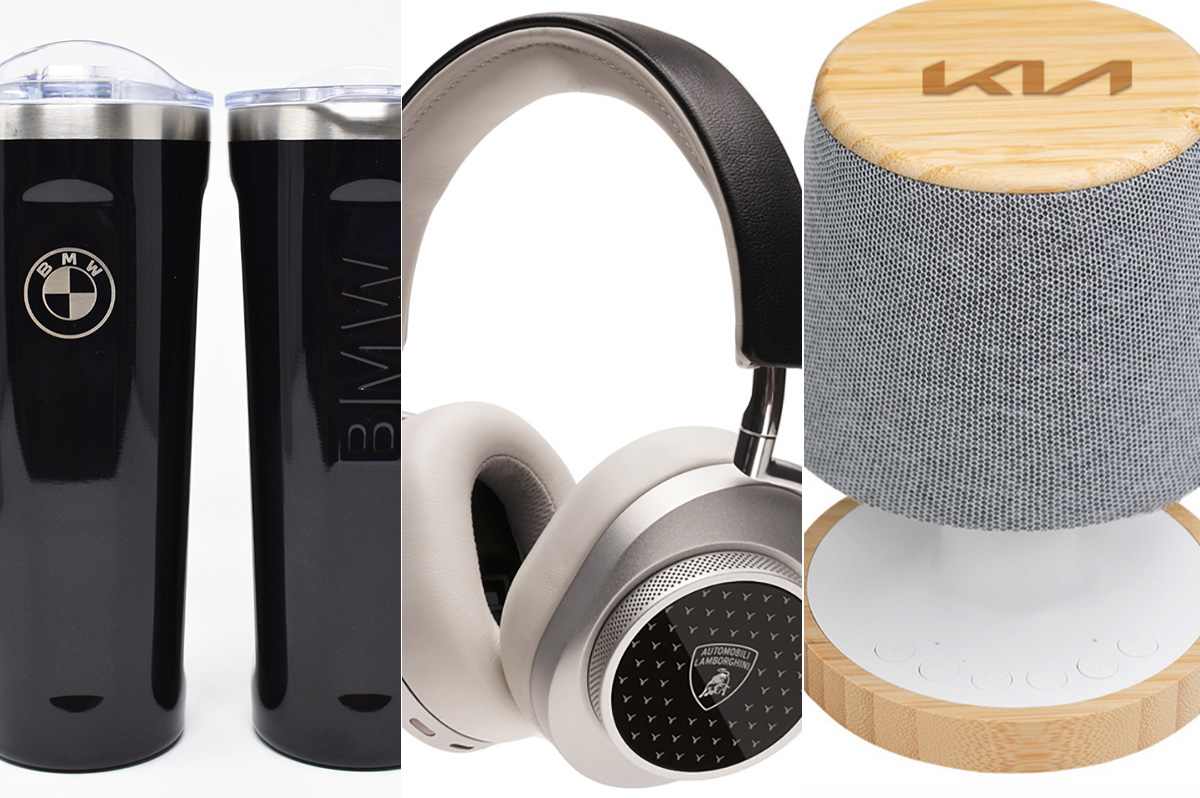
Here’s how to shift your holidays into high gear.
Bentley Bottle Stopper
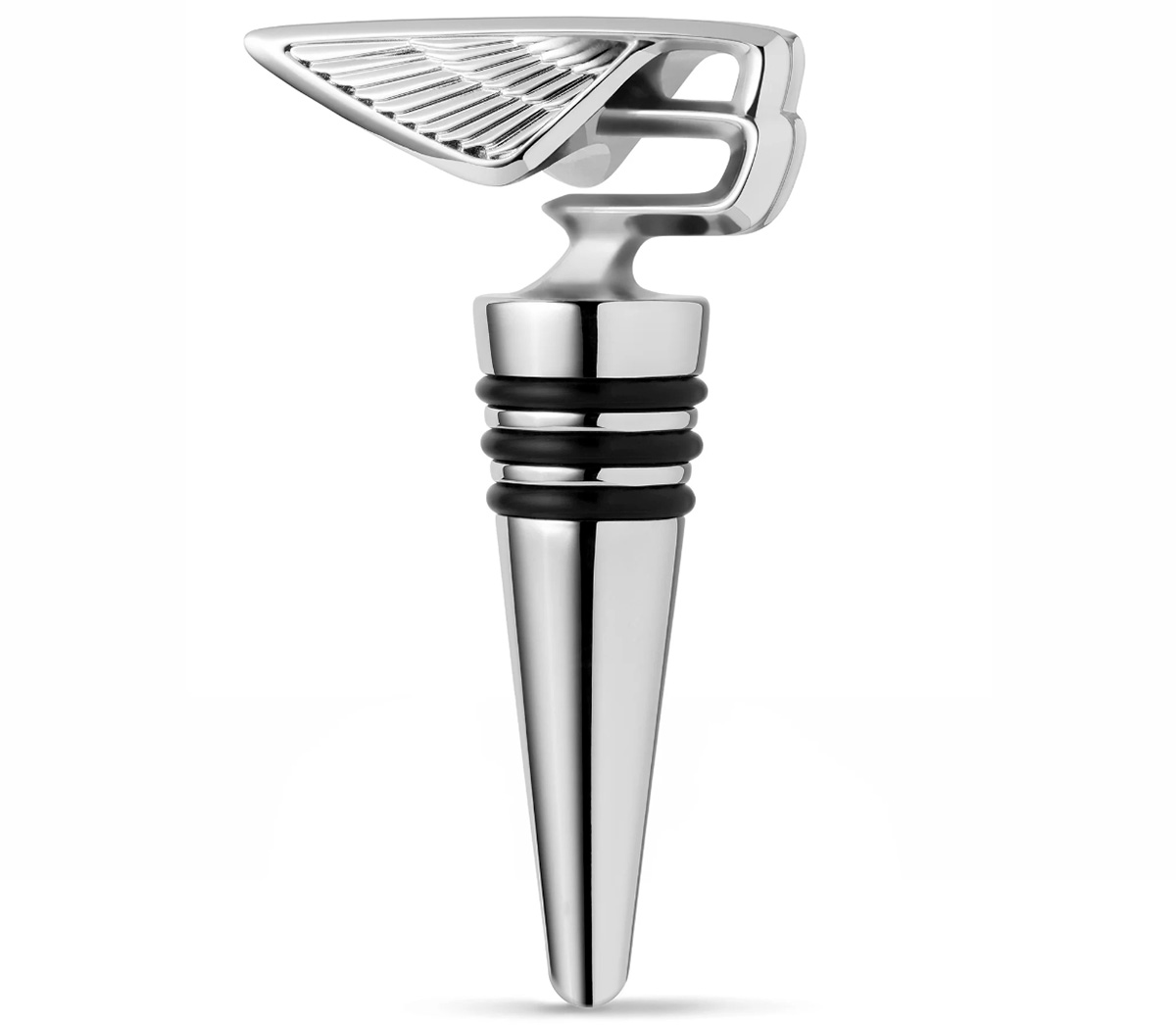
Pop your cork—in a good way—with a Bentley bottle stopper ($106), made of zinc alloy with chrome plating and rubber rings. The classy design is inspired by the automaker’s iconic “Flying B” mascot from 1930.
Subaru Motorsports Counter Stool
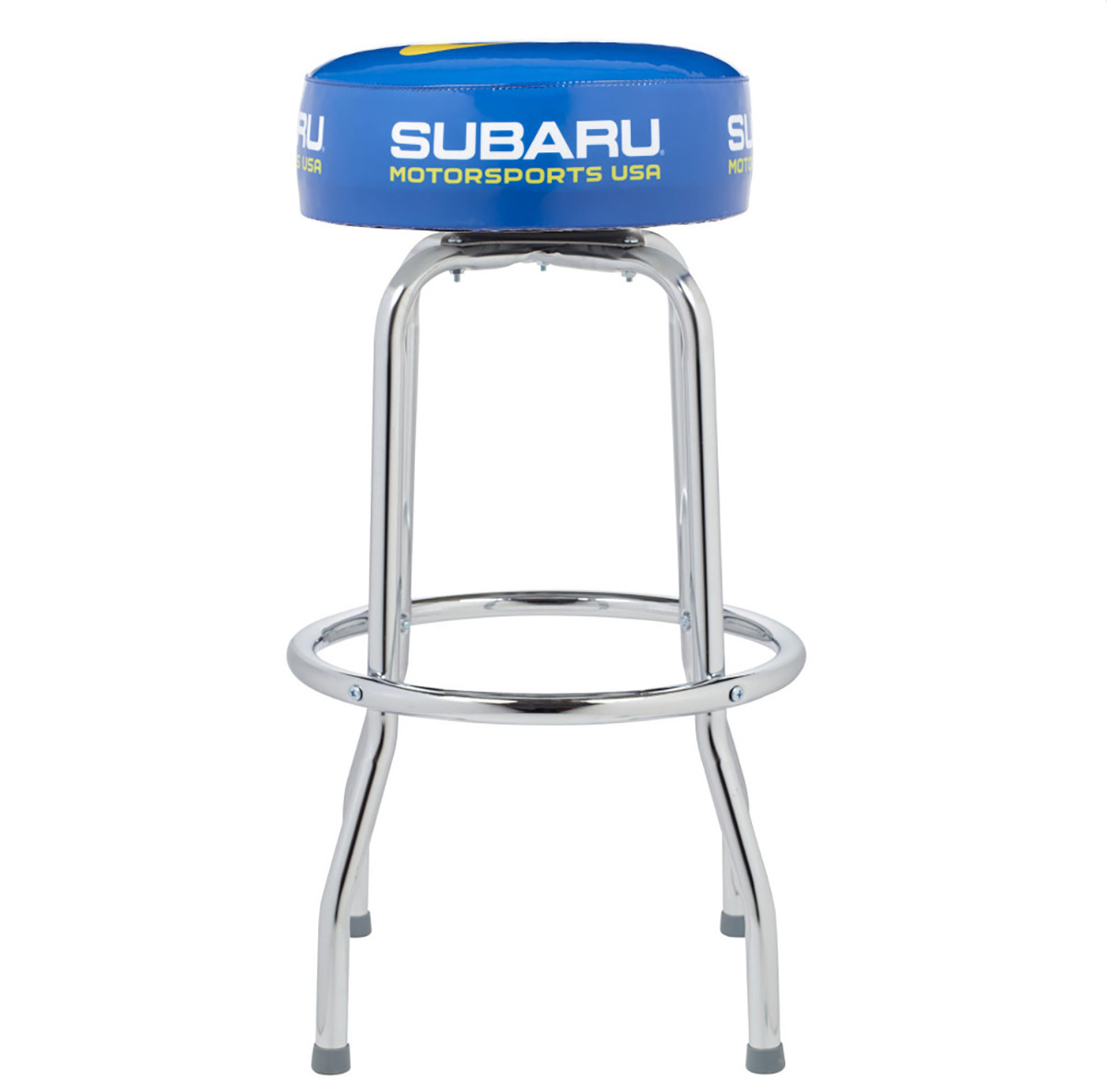
Belly up to the bar with the Subaru Motorsports Counter Stool ($175). The 30-inch-tall metal chair—with padded vinyl cover and automaker logo—is lightweight and swivels 360 degrees.
BMW Luxe Luggage
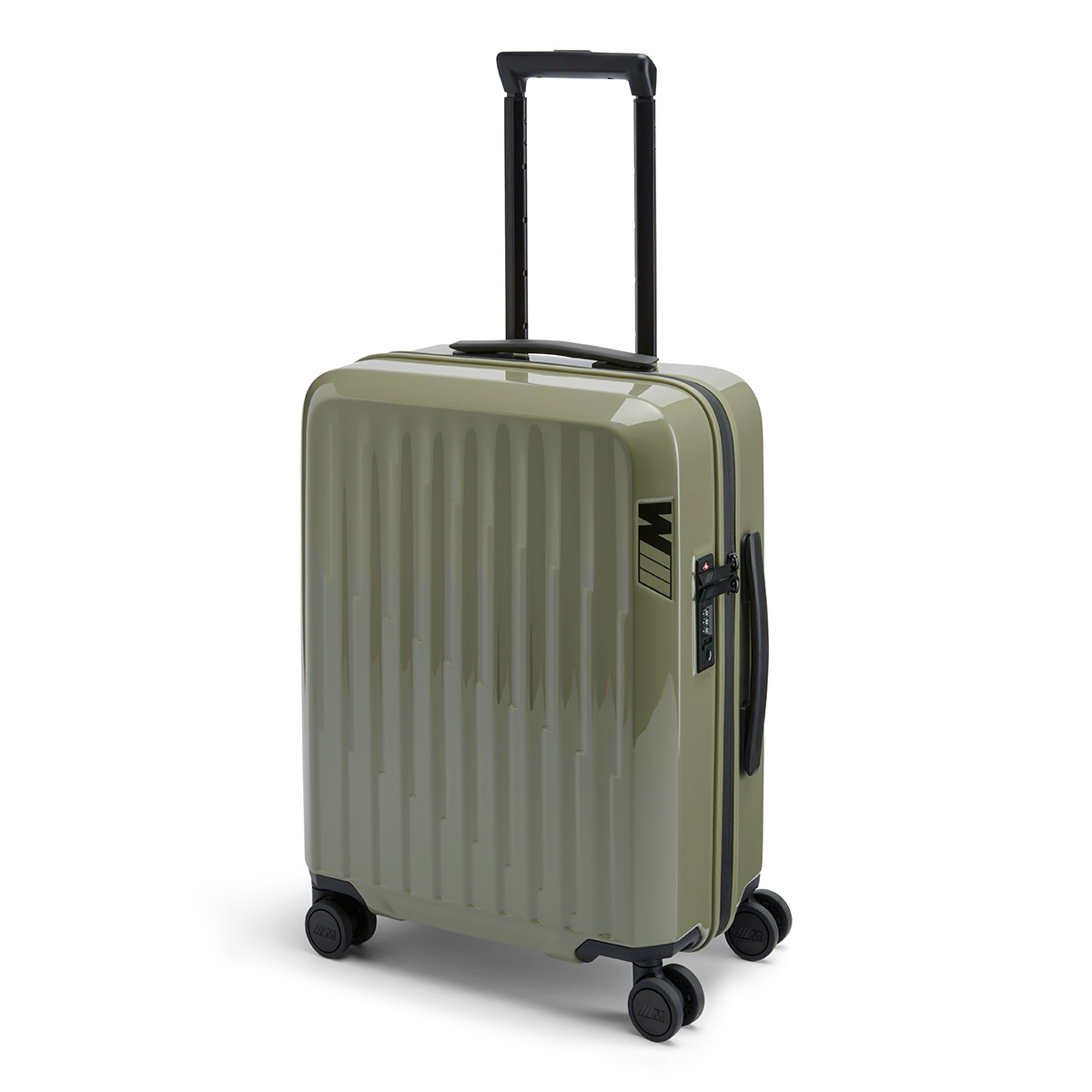
You won’t have trouble spotting this chic khaki-green BMW M Boardcase ($307) at airport baggage carousels. The high-performance “M” logo is etched on the durable polycarbonate casing, as well as on the main compartment zipper and all four of the sturdy double wheels. Comes with recycled lining, along with laundry and shoe bags.
Ford Yoga Gym Bag
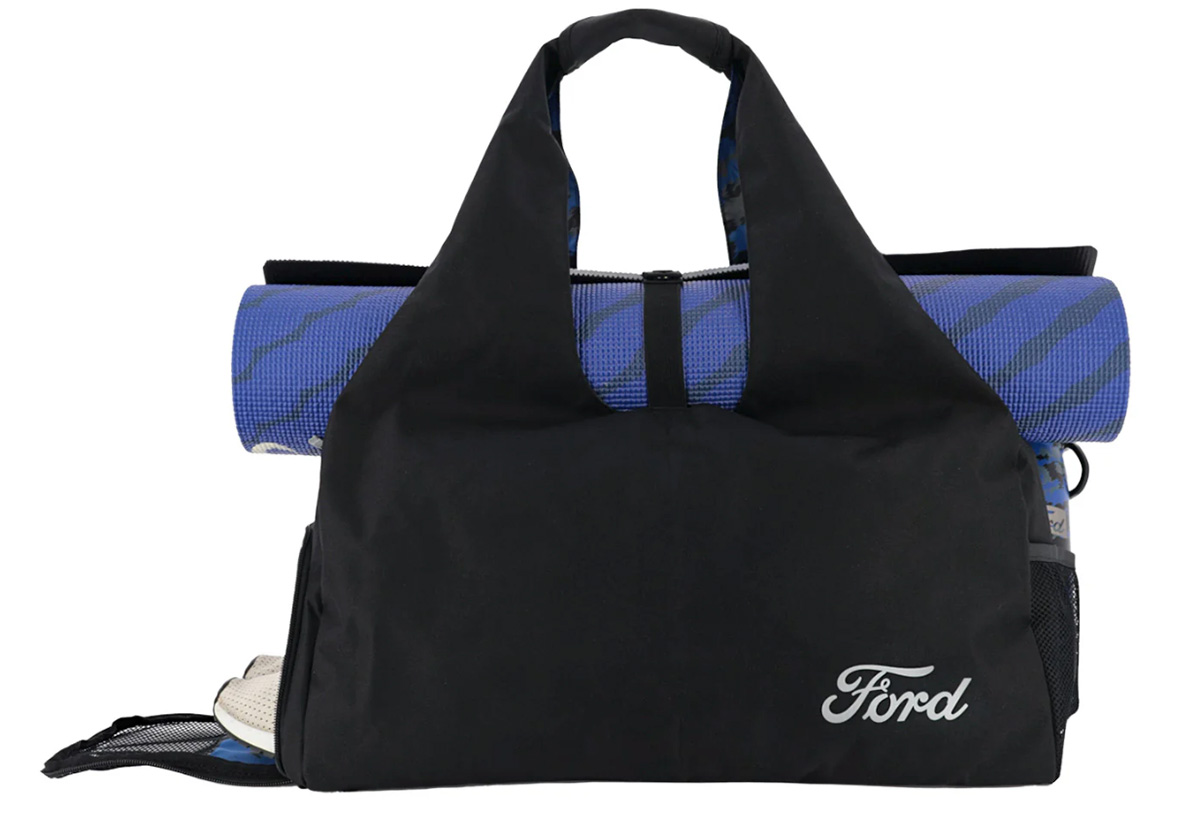
The Ford Yoga Gym Bag ($15) has a wide handle and button strap to securely carry a yoga mat, as well as convenient pockets to stow water bottles and shoes. Made of black polyester, with reflective silver Ford logo. (Yoga mat not included.)
Kia Mini Lamp with Speaker/Sound
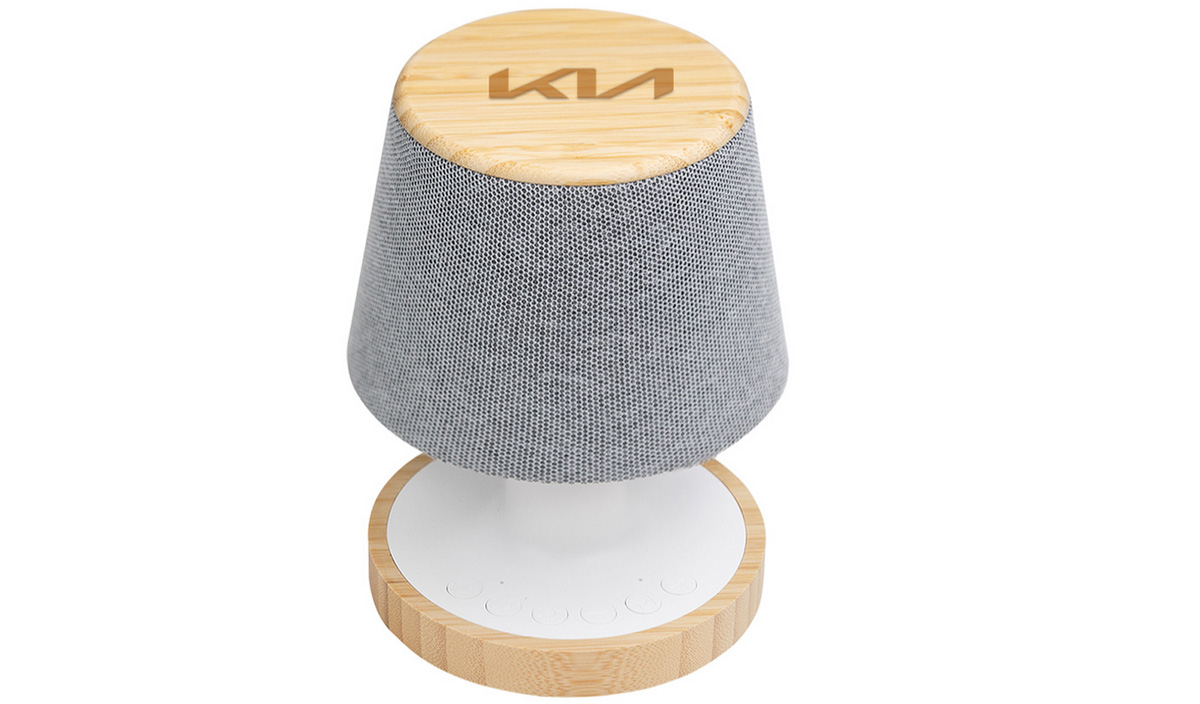
It doesn’t get much more Zen than a Kia Mini Lamp with Speaker and Sound Machine ($50). Made of bamboo, sturdy plastic and a fabric grill, the tiny wireless lamp has LED lighting with three settings. Pair with your phone to choose from eight soothing sounds: brook noise, bird chirp, forest bird, white bird, ocean wave, rainy day, wind and fireside.
Lexus Green Pro Set
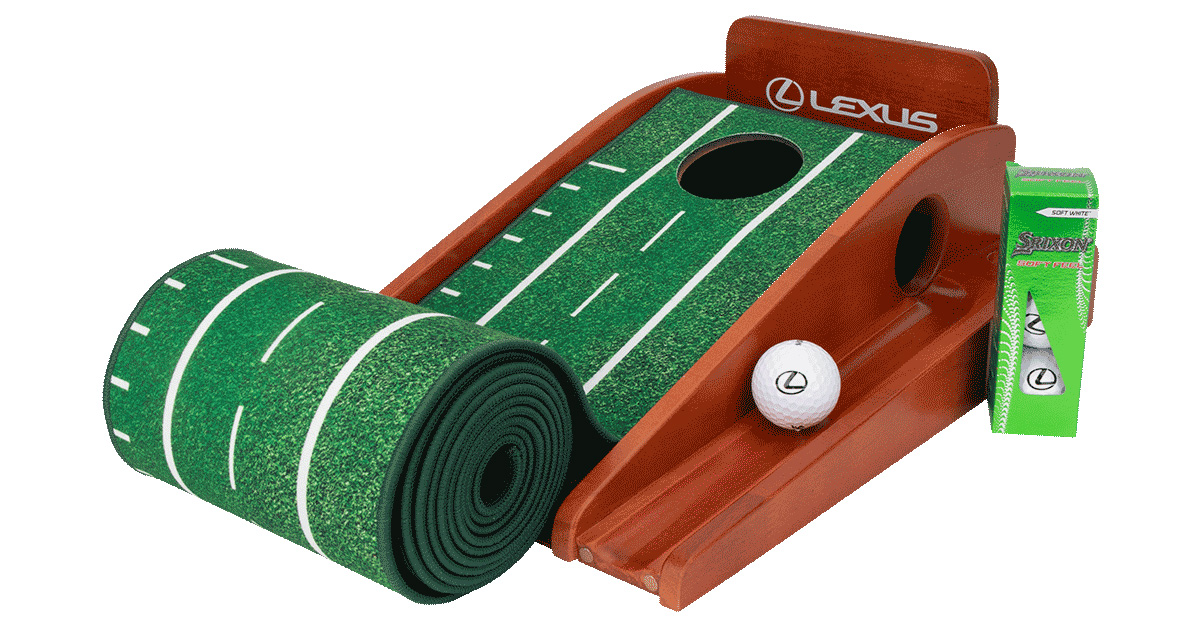
Practice makes perfect with the Lexus Green Pro Set ($257), a putting mat with “train-track markings” to help improve any golfer’s alignment. Lexus logo on the wood frame with automatic ball return.
Lamborghini Wireless Headphones
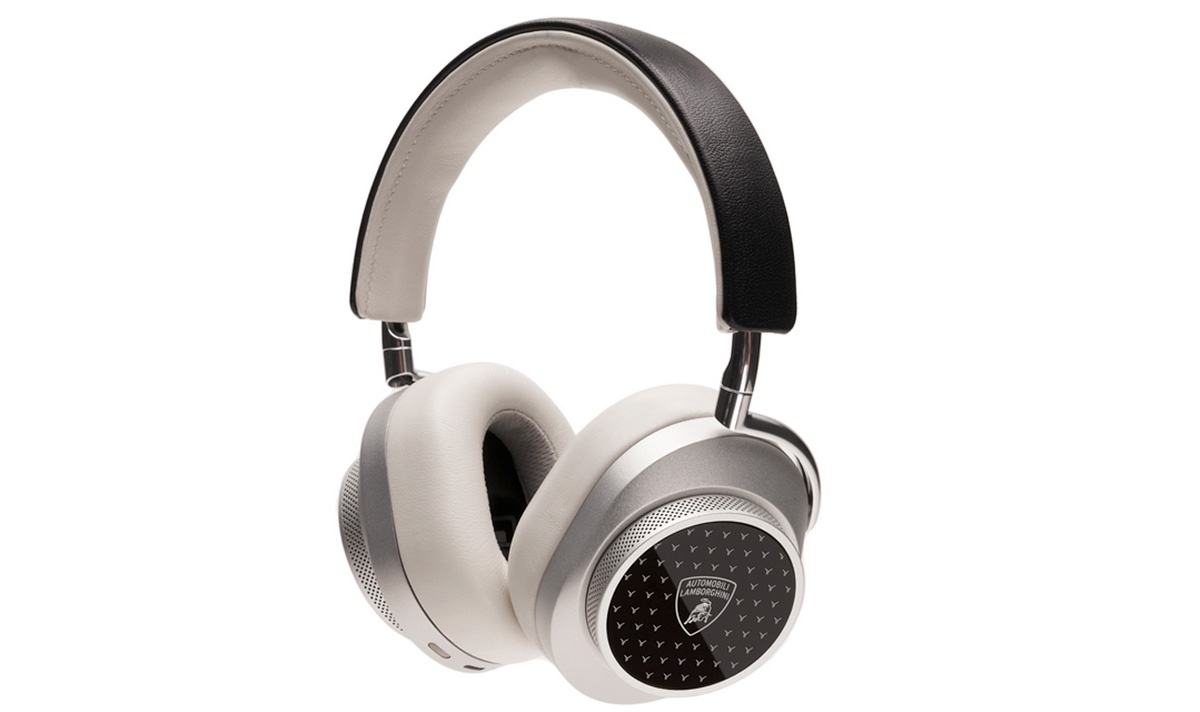
Turn on, tune in, drop out—well, at least at the end of a hectic day—with these Lamborghini Wireless MW75 Headphones by Master & Dynamic ($901). Batteries last up to 32 hours or up to 28 hours in active noise-canceling mode.
BMW Quatro Slim Travel Tumbler

The BMW Quatro Slim Travel Tumbler ($23) lives up to its name: sleek, smooth and scratch-resistant. Comes with leak-proof lid and non-spill design.
Ford Vintage Mustang Ceramic Mug
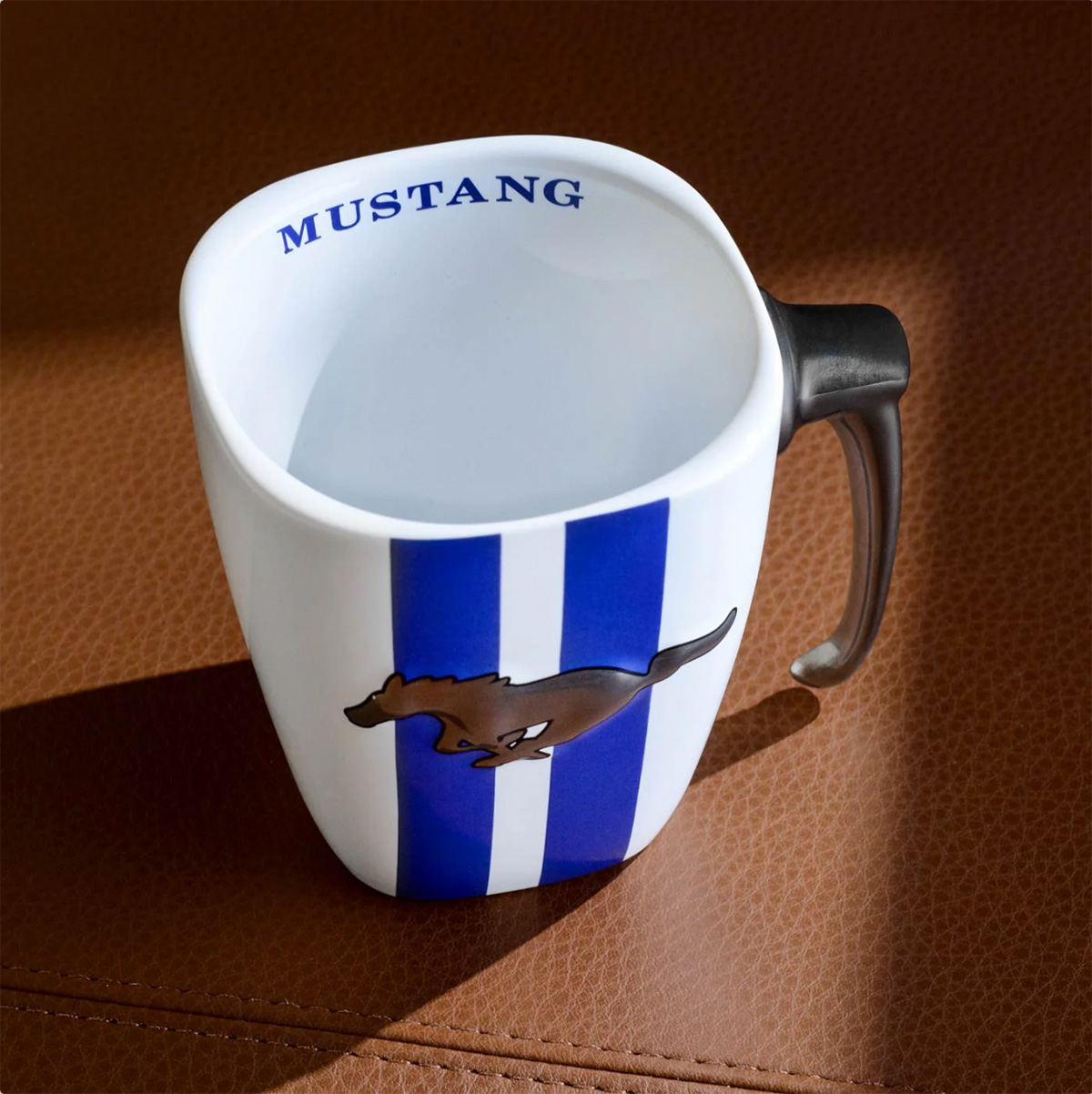
Giddy-up each morning with the Ford Vintage Mustang Ceramic Mug ($29). With cool blue stripes, the 14-ounce mug features a silver handle and iconic pony emblem.
My First Lamborghini by Clementoni
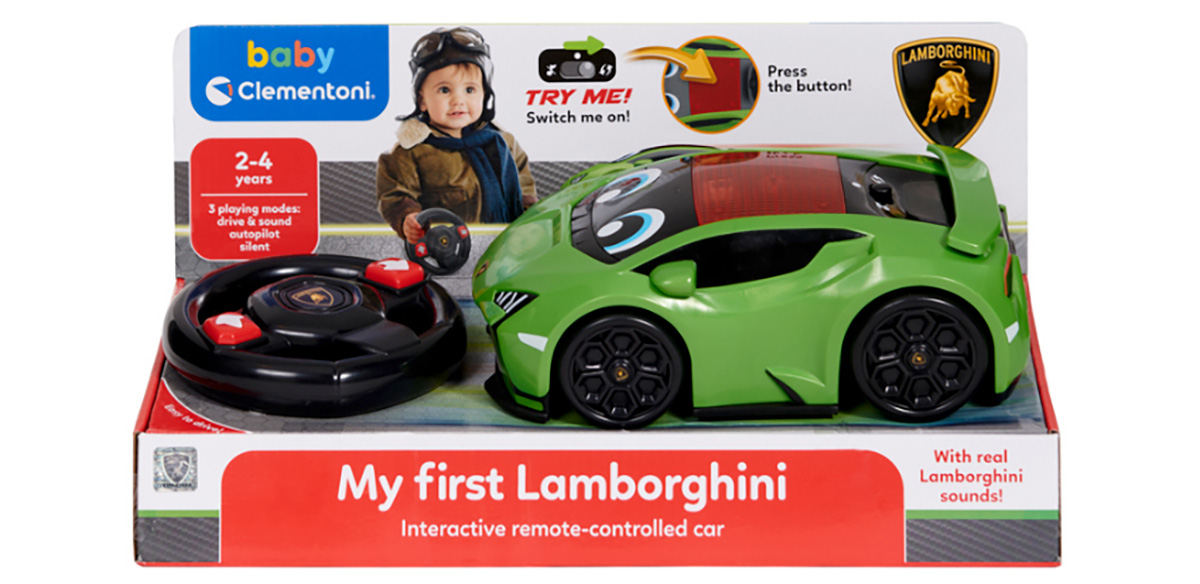
Proving it’s never too early to drive an exotic car, My First Lamborghini by Clementoni ($62) is for children ages two- to four-years old. Kids can activate the remote-control car by pressing the button on the roof or by using the remote. This Lambo certainly is less expensive than an entry-level Huracan, which starts at $250,000.
Rolls-Royce Cameo

For adults looking for their own pint-sized luxury ride, there’s the Rolls-Royce Cameo ($5,500). Touted as a piece of art rather than a toy, this miniature collectible is made from the same solid oak and polished aluminum used in a real Rolls. As with those cars, this one even has self-leveling wheel-center caps (which operate independently of the hubcaps so that the RR logo is always in the upright position).
Maserati Notebook
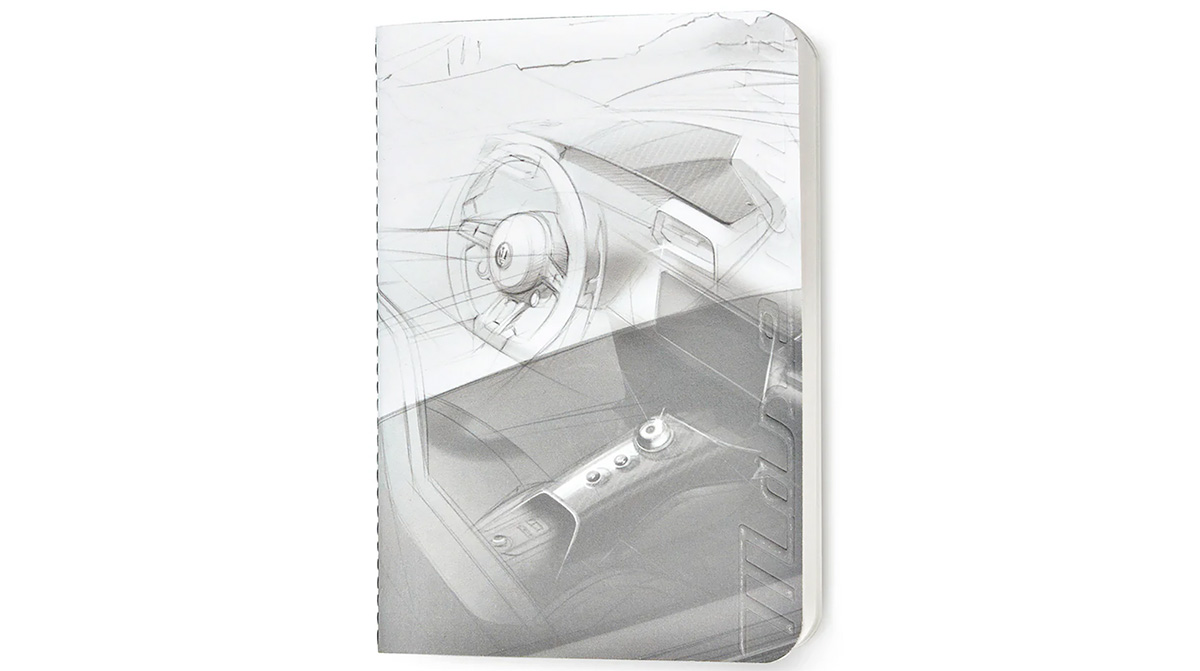
For those of us who still love the art of writing, the Maserati MC20 Sketch Note ($11) is an elegant notebook with 48 sheets of high-quality paper. The front and back covers feature stylish sketches of the interior of a Maserati MC20 supercar and the Maserati logo. Comes with saddle-stitched binding using black thread.
Dodge Demon Dog Collar
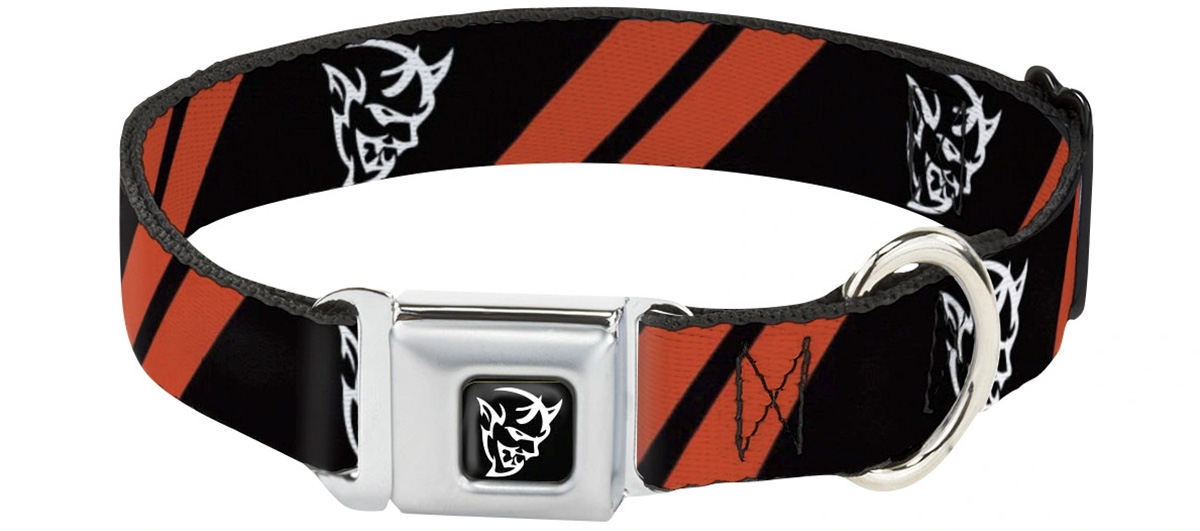
If your pooch is more Fluffy-kins and less the guard dog you sometimes need it to be, then there’s the Dodge Demon Seatbelt Buckle Dog Collar ($30). Made of steel and high-density polyester with a tiny seatbelt-buckle clasp, the collar is emblazoned with devilish Dodge Demon logos.
Real Estate
In real estate, it’s déjà vu all over again
1970s and ‘80s volatility led to creative financing options

In the 1970s and 1980s, mortgage interest rates climbed into the double digits and peaked above 18%. With rates like that, you needed more than a steady job and a down payment to buy a home — you needed creative financing ideas.
Today’s market challenges may look different, but the response has been surprisingly familiar: unusual financing methods are making a comeback, along with some new ones that didn’t exist decades ago. Here is a brief overview of the most popular tools from that era.
Assumable Mortgages were available with FHA, VA, and USDA loans and, until 1982, even Conventional mortgages. They allowed a buyer to take over the seller’s existing mortgage, including its interest rate, rather than getting a brand-new loan, while compensating the seller for the difference between the assumed loan balance and the contract price.
Often, a seller played a substantial role in a purchase. With Seller Financing (Owner Carry) the seller became the bank, letting the buyer make payments directly to them instead of to a traditional lender.
One variation on Seller Financing was the Land Contract. The seller was still the lender, but the buyer made loan payments to the seller, who then paid his own mortgage and pocketed the difference. The buyer would receive equitable title (the right to use and occupy the property), while the seller kept the title or deed until the contract was paid off or the property sold.
With Wraparound Mortgages, the seller created a new, larger loan for the buyer that “wrapped” around the existing mortgage at an agreed-upon rate. The buyer would then pay the seller, who would continue making mortgage payments on the existing balance, collecting payments and pocketing the spread. Whether title conveyed to the buyer or remained with the seller was negotiated between the parties.
Unlike an assumption, when buying a home Subject To an existing mortgage, the buyer took title to the property and agreed to pay the seller’s mortgage directly to the lender plus any equity to the seller; the mortgage stayed in the seller’s name. Now, most mortgages have a Due on Sale clause that prohibits this kind of transaction without the expressed consent of the lender.
Rent-to-Own was also a popular way to get into a home. While a potential buyer rented a property, the seller would offer an option to purchase for a set amount to be exercised at a later date (lease option) or allow a portion of the rent collected to be considered as a downpayment once accrued (lease purchase).
Graduated Payment Mortgage (GPM) loans were authorized by the banking industry in the mid-1970s and Adjustable Rate Mortgages (ARM) surfaced in the early 1980s. Both featured low initial payments that gradually increased over time.
With the GPM, although lower than market to start, the interest rate was fixed and payment increases were scheduled. A buyer could rely on the payment amount and save accordingly.
ARMs, on the other hand, had interest rates that could change based on the market index, with less predictability and a higher risk of rate shocks, as we saw during the Great Recession from 2007-2009.
While mortgage rates today aren’t anywhere near the extremes of the 1980s, buyers still face a tough environment: higher prices, limited inventory, and stricter lending standards. That combination has pushed people to explore tried and true alternatives and add new ones.
Assumable mortgages and ARMs are on the table again and seller financing is still worth exploring. Just last week, I overheard a colleague asking about a land contract.
Lenders are beginning to use Alternative Credit Evaluation indicators, like rental payment history or bank cash-flow analysis, to assess borrower strength when making mortgage loan decisions.
There are Shared Equity Programs, where companies or nonprofits contribute part of a down payment in exchange for a share of the home’s future appreciation. With Crowdfunding Platforms, investors pool money online to finance real estate purchases or developments.
Another unconventional idea being debated today is the 50-year mortgage, designed to help buyers manage high home prices. Such a mortgage would have a 50-year repayment term, rather than the standard 30 years, lowering monthly payments by stretching them over a longer period.
Supporters argue that a 50-year mortgage could make monthly payments significantly more affordable for first-time buyers who feel priced out of the market. Critics, however, warn that while the monthly payment may be lower, the lifetime interest cost would be much higher.
What ties the past and present together is necessity. As long as affordability remains strained, creative financing – old and new – will continue to shape the way real estate gets bought and sold. As with everything real estate, my question will always be, “What’s next?”
Valerie M. Blake is a licensed Associate Broker in D.C., Maryland, and Virginia with RLAH @properties. Call or text her at 202-246-8602, email her at [email protected] or follow her on Facebook at TheRealst8ofAffairs.
Real Estate
Could lower rates, lagging condo sales lure buyers to the table?
With pandemic behind us, many are making moves

Before the interest rates shot up around 2022, many buyers were making moves due to a sense of confinement, a sudden need to work from home, desire for space of their own, or just a general desire to shake up their lives. In large metro areas like NYC, DC, Boston, Chicago, Miami and other markets where rents could be above $2k-$3k, people did the math and started thinking, “I could take the $30,000 a year I spend in rent and put that in an investment somewhere.”
Then rates went up, people started staying put and decided to nest in the new home where they had just received a near 3% interest rate. For others, the higher rates and inflation meant that dollars were just stretching less than they used to.
Now – it’s been five years since the onset of the pandemic, people who bought four years ago may be feeling the “itch” to move again, and the rates have started dropping down closer to 5% from almost 7% a few years ago.
This could be a good opportunity for first time buyers to get into the market. Rents have not shown much of a downward trend. There may be some condo sellers who are ready to move up into a larger home, or they may be finding that the job they have had for the last several years has “squeezed all the juice out of the fruit” and want to start over in a new city.
Let’s review how renting a home and buying can be very different experiences:
- The monthly payment stays (mostly) the same. P.I.T.I. – Principal, Interest, Taxes and Insurance – those are the four main components of a home payment. The taxes and insurance can change, but not as much or as frequently as a rent payment. These also may depend on where you buy, and how simple or complex a condo building is.
- Condo fees help pay for the amenities in the building, put money in the building’s reserve funds account (an account used for savings for capital improvement projects, maintenance, and upkeep or additions to amenities)
- Condos have restrictions on rental types and usage – AirBnB and may not be an option, and there could be a wait list to rent. Most condo associations and lenders don’t like to see more than 50% of a building rented out to non-owner occupants. Why? Owners tend to take better care of their own building.
- A homeowner needs to keep a short list of available plumbers, electricians, maintenance people, HVAC service providers, painters, etc.
- Condo owners usually attend their condo association meetings or at least read the notices or minutes to keep abreast of planned maintenance in the building, usage of facilities, and rules and regulations.
Moving from renting to homeownership can be well worth the investment of time and energy. After living in a home for five years, a condo owner might decide to sell, and find that when they close out the contract and turn the keys over to the new owner, they have participated in a “forced savings plan” and frequently receive tens of thousands of dollars for their investment that might have otherwise gone into the hands of a landlord.
In addition, condo sellers may offer buyers incentives to purchase their home, if a condo has been sitting on the market for some time. A seller could offer such items as:
- A pre-paid home warranty on the major appliances or systems of the house for the first year or two – that way if something breaks, it might be covered under the warranty.
- Closing cost incentives – some sellers will help a cash strapped buyer with their closing costs. One fun “trick” realtors suggest can be offering above the sales price of the condo, with a credit BACK to the buyer toward their closing costs. *there are caveats to this plan
- Flexible closing dates – some buyers need to wait until a lease is finished.
- A seller may have already had the home “pre-inspected” and leave a copy of the report for the buyer to see, to give them peace of mind that a 3rd party has already looked at the major appliances and systems in the house.
If the idea of perpetual renting is getting old, ask a Realtor or a lender what they can do to help you get into investing your money today. There are lots of ways to invest, but one popular way to do so is to put it where your rent check would normally go. And like any kind of seedling, that investment will grow over time.
Joseph Hudson is a referral agent with Metro Referrals. He can be reached at 703-587-0597 or [email protected].
-

 The White House5 days ago
The White House5 days agoTrans workers take White House to court over bathroom policy
-

 Opinions5 days ago
Opinions5 days agoEverything is Everything
-

 Federal Government5 days ago
Federal Government5 days agoHHS ‘peer-reviewed’ report calls gender-affirming care for trans youth dangerous
-

 Congress4 days ago
Congress4 days agoMTG resigns after years of anti-LGBTQ attacks amid Trump feud











